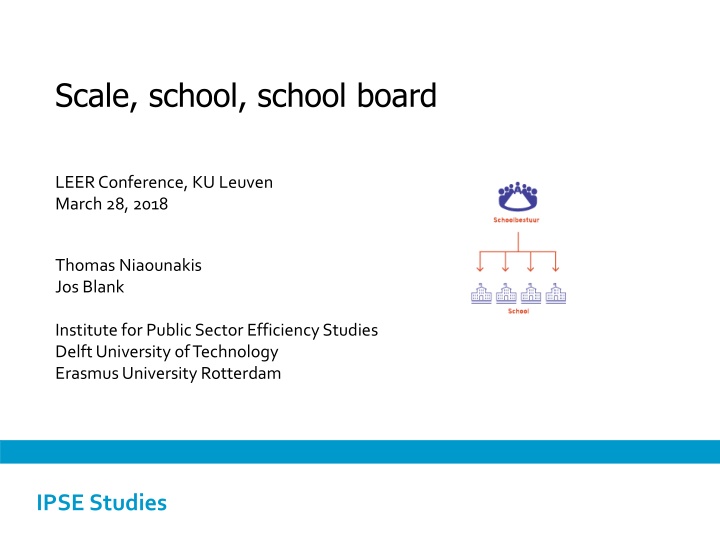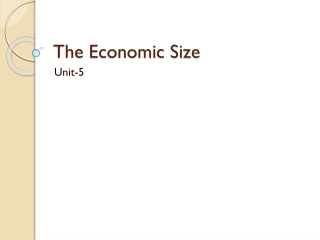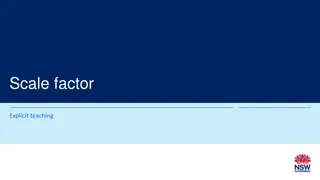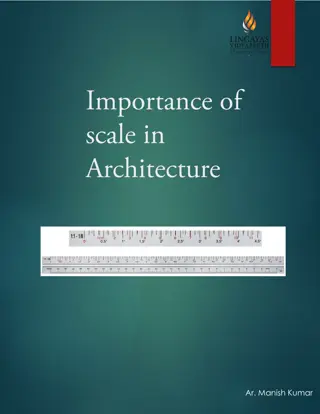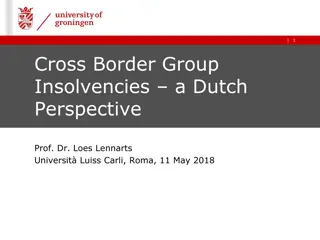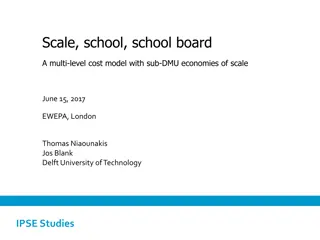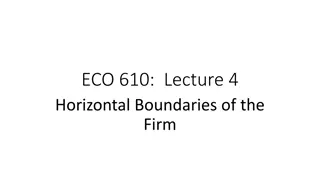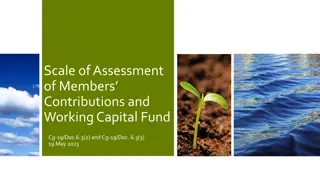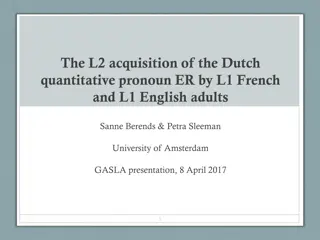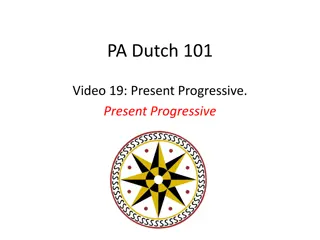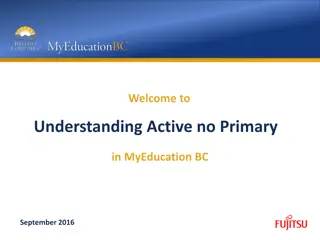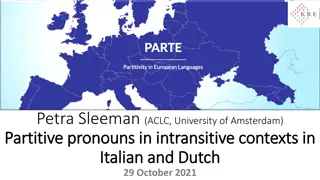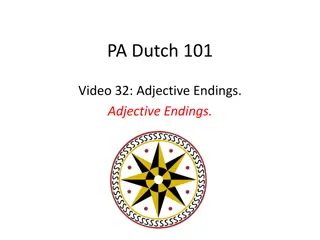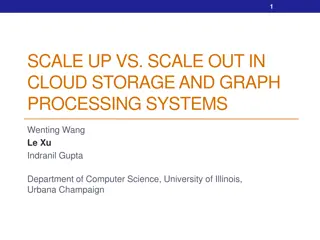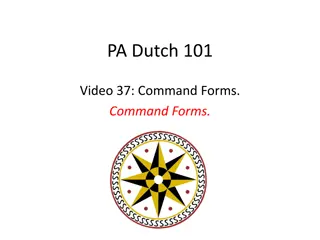Economies of Scale in Dutch Primary Education: Analysis of School and Board Sizes
This study examines economies of scale in Dutch primary education, focusing on the cost perspective, implications of school and board sizes, and the potential impact on educational policy. The research delves into the relationship between input costs, enrollment, and managerial oversight in large educational institutions.
Download Presentation

Please find below an Image/Link to download the presentation.
The content on the website is provided AS IS for your information and personal use only. It may not be sold, licensed, or shared on other websites without obtaining consent from the author.If you encounter any issues during the download, it is possible that the publisher has removed the file from their server.
You are allowed to download the files provided on this website for personal or commercial use, subject to the condition that they are used lawfully. All files are the property of their respective owners.
The content on the website is provided AS IS for your information and personal use only. It may not be sold, licensed, or shared on other websites without obtaining consent from the author.
E N D
Presentation Transcript
Scale, school, school board LEER Conference, KU Leuven March 28, 2018 Thomas Niaounakis Jos Blank Institute for Public Sector Efficiency Studies Delft University of Technology Erasmus University Rotterdam IPSE Studies
Introduction This paper is on economies of scale in Dutch primary education Cost perspective: are large educational institutions cheaper? Up to what point? Potential mechanisms: managerial oversight, capacity utilization Well-developed strand of literature on the topic e.g.: Wales (1973, IER) Andrews et al. (2002, EER), Colegrave et al. (2009, EER) More recently: Schiltz & de Witte (2017, BERJ) Typical empirical set-up: estimate relation between input (cost, cost per pupil) and output (enrolment) using some cost function: ? = ?1?1+ ?2?12 2 IPSE Studies
Educational autonomy in the Netherlands Key issue this paper: distinction between board and school size Board is often unit of analysis (or district) data restrictions School boards govern groups of school. Tasks are related to management: HRM; Finance, allocation of funding among schools; Accountability; Roughly equivalent to US school districts. Schools: Curriculum; Teaching methods; In general: content. 3 IPSE Studies
Motivation Average school board has increased threefold since 1990 2011: legislation passed ( Merger test ) Legislation was softened after being criticized for not being substantiated by enough evidence This paper s aim: contribute to the knowledge on the relation between school size, board size and cost Can we substantiate a maximum school size? Can we substantiate a maximum board size? More generally: at what level are scale economies relevant and what does this imply policy? 4 IPSE Studies
Motivation There are big boards with many small schools There are small boards with few large schools In other words: There is considerable variation in school size.. Board and school size do not correlate (0.13).. Both may matter for average cost 5 IPSE Studies
The largest board governs on average mid-sized schools Total enrollment (board) The largest schools are governed by a mid-sized board Average school size 6 IPSE Studies
Outline Easiest solution: estimate both school and board cost functions Measurement issue: individual school cost is not observed School characteristics are observed, including output Strategy: aggregate individual school cost functions and estimate parameters at the board level ??= ???= ?(??,??,??) Challenge: find a flexible cost function that is also feasible to estimate 7 IPSE Studies
Data Observed at board level Input (cost) data Factor prices: wages, material price index (only time variant) Observed at school level Output: enrolment corrected for pupil characteristics (three pupil categories) Environment (municipality level): socio-economic control variables 2008-2015, 3.481 observations Limited within variation -> identification relies on cross-sectional variation -> effectively there are ~700 observations No causal inference i.e. merger effects are neglected 8 IPSE Studies
Cost function ? = ? ?,? = min ? ? ?,? ? ?,? ? Where: ? = (minimum) cost; ? = vector of serviced produced; ? = vector of resource prices; ? = vector of resources. A single school cost function can be written as: ???= ? ???,???,??? exp[? ??] exp ? ?? : captures deterministic efficiency (scaling property) Inflates cost by a factor >1 Included to capture potential effects on efficiency 9 IPSE Studies
School cost function Aggregated school cost function: ? ???,???,??? exp[? ??] ??= ? Imposing a translog functional specification: ? ???,???,???,? ??ln(ym) +1 = exp ? + 2 ??? ln ?? ln ?? + ???? + [? ??]+ ? ? ? ? ? We do not observe ln(???) and hence estimate the sum of exponentiated translogs Estimation feasible using any nonlinear estimator 10 IPSE Studies
Results Estimated relation between efficiency (y-axis) and number of schools governed (x-axis) Estimated relation between school size and cost 11 IPSE Studies
Results Model of fit tests indicate a significantly better fit than naive models that do not incorporate school composition Small schools are expensive on average (increasing economies of scale) Optimal scale estimated around 500 pupils Large schools are not significantly scale inefficient Scale effects at the board level are small to non-existent Board with many schools are estimated slightly more inefficient 12 IPSE Studies
Concluding remarks School size matters more than board size Small schools are especially expensive Large schools and boards are not estimated significantly scale inefficient Policy Scale inefficiency alone insufficient argument But: scale efficiency poses no valid argument for increasing scale much over 500 (schools) or in general for boards Other considerations: quality and scale, market power/freedom of choice, private costs 13 IPSE Studies
